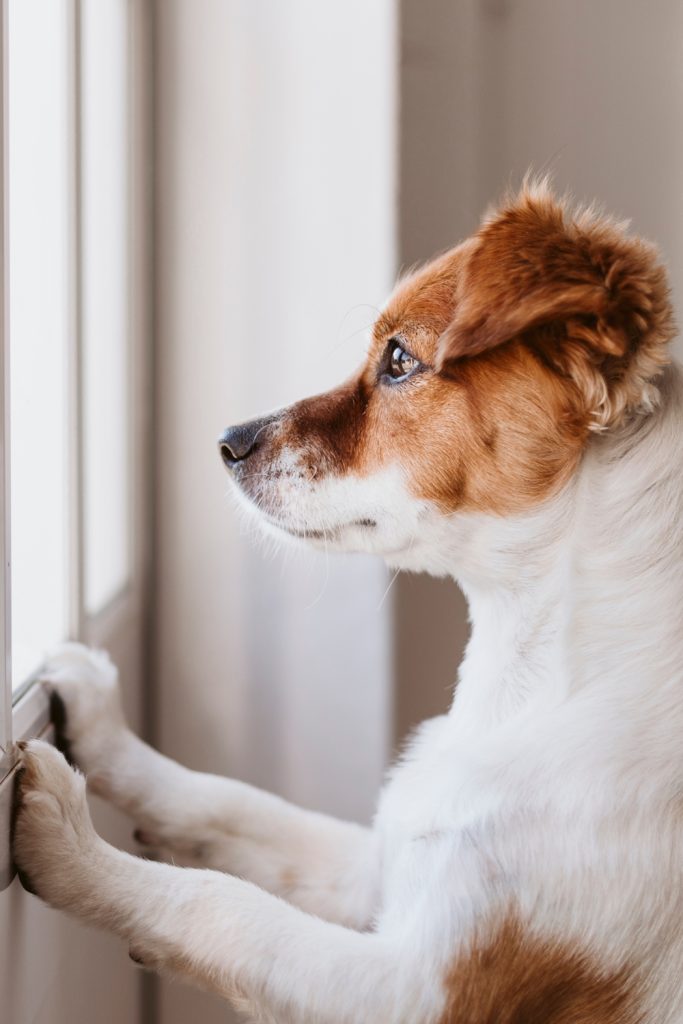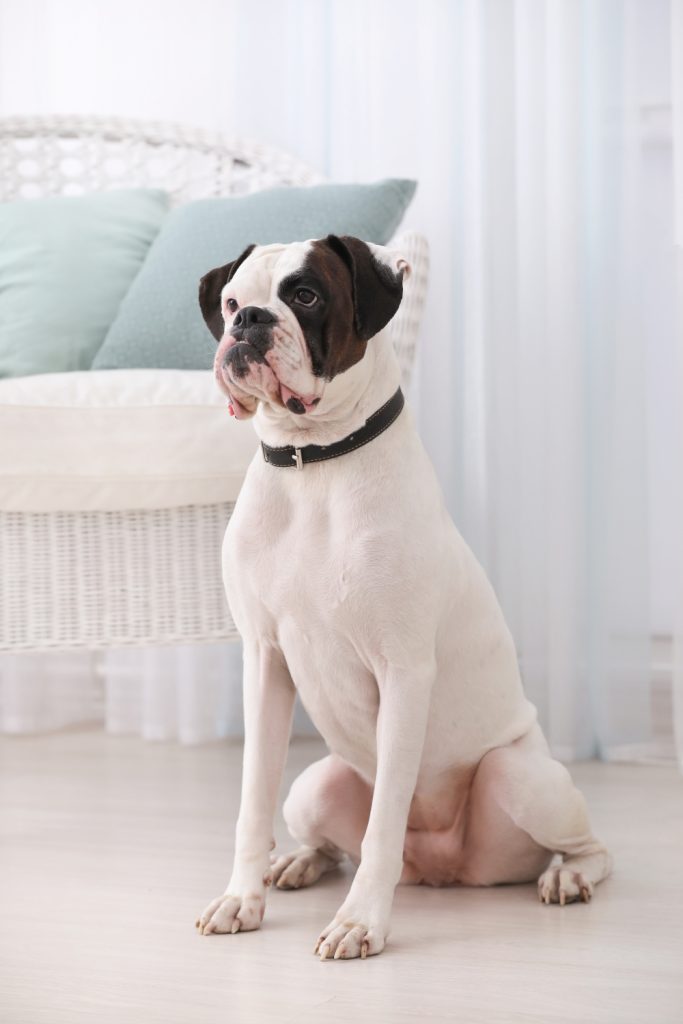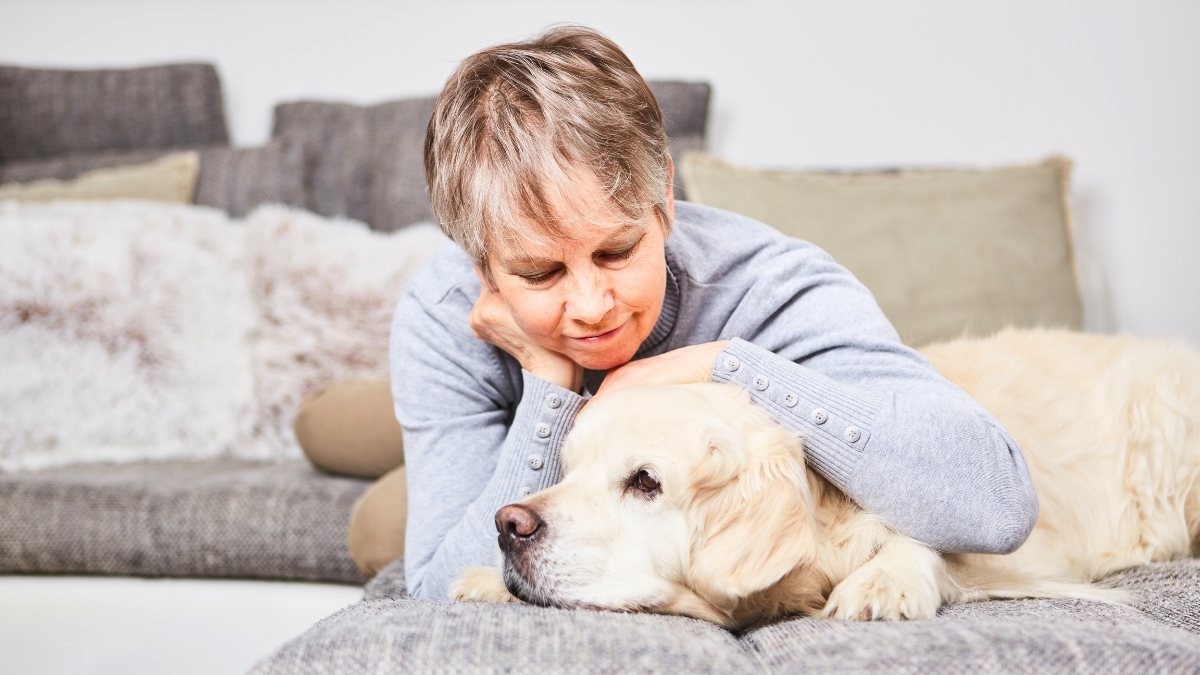Yes, dogs can absolutely feel lonely at home. But here’s the thing—they don’t experience loneliness the same way we do.
Instead, they show it through their behavior and body language, which can be easy for humans to miss.
Here are 7 common signs that your dog might be feeling sad and lonely, and how you can help them feel more connected.
1. Destructive Behavior
When your dog chews up your favorite shoes, gnaws on furniture, or raids the trash, they’re not trying to get back at you.
This is their way of dealing with loneliness and boredom. If they’re not getting enough exercise or mental stimulation, they’ll find their own way to stay busy—and chances are, you’re not going to love their choice.
On top of that, chewing and destroying things helps them relieve stress from being alone. Instead of getting mad, try to put yourself in their paws for a second. They’re not being “bad” on purpose.
2. Excessive Barking
Does your dog bark nonstop the second you leave? Or maybe they start howling like a sad little wolf?
This isn’t just a quirky habit—it’s their way of expressing stress or loneliness. Dogs are highly social creatures, and being alone is harder for them than we often realize.
That nonstop barking is basically them shouting, “Hey, I need some help here!” It often happens right after you leave or when the house is eerily quiet.
Barking isn’t the only way they might show their sadness—some dogs may pant excessively, whine, or let out little cries.
3. Lethargy
This one’s a bit more subtle.
If your dog isn’t excited to greet you, seems more interested in lying down than playing, or just seems “off,” loneliness could be the culprit.
Lethargy isn’t always obvious because it can be mistaken for just a “lazy day.” But dogs are naturally curious and active, so when they’re feeling lonely, that spark disappears.
They may start sleeping more than usual or even hide in small spaces, like a closet, where they feel safer.
This isn’t just a mood thing—if it gets worse, it could be an early sign of depression.
Don’t brush off this behavior.
And remember, lethargy can sometimes signal health issues. If your dog is also vomiting, has diarrhea, or isn’t eating, it’s time for a vet visit.
4. They Follow You Everywhere
Does your dog shadow you from room to room like your personal four-legged bodyguard?
It might seem adorable, but it could also be a sign of loneliness.
A pup that constantly follows you—even interrupting their nap time—is seeking security and companionship.
It’s not just because they’re clingy; it’s because you are their comfort zone. If your dog is trailing you more than usual or whining when you’re out of sight, they’re telling you they need extra attention.
Even though it might seem sweet, this behavior is often a sign that your dog is feeling lonely or insecure.
It’s less “aww, how sweet” and more “uh-oh, I need some extra love and reassurance!”
5. Excessive Licking
If your dog is constantly licking themselves, it’s time to take notice.
At first glance, it might seem harmless—just a little self-grooming, right? But excessive licking is often a sign of anxiety or loneliness.
Dogs lick as a way to soothe themselves, similar to how humans fidget when stressed.
The problem? Too much licking can lead to irritated skin, hair loss, or even painful sores known as lick granulomas. These often appear on their paws or wrists and can become serious if left unchecked.
If you notice raw or damaged skin, a vet visit is a good idea to make sure everything is under control.
6. Peeing in the Wrong Places
If a house-trained dog suddenly starts peeing indoors, consider it a red flag.
More than just an “accident,” this can be their way of expressing stress or loneliness.
Dogs use urine to mark territory and self-soothe when they’re feeling anxious. This is especially common after long periods alone or big changes in their routine, like a move or a shift in your schedule.
It’s not about defiance—it’s about them not knowing how to handle their emotions.
7. Loss of Appetite
This is one of the biggest red flags that something’s off.
If your dog suddenly seems uninterested in food, eats way slower than usual, or ignores their favorite treats, they might be feeling lonely or emotionally stressed.
Just like humans, dogs can lose their appetite when they’re emotionally down.
Loneliness doesn’t just affect their mood—it can disrupt their hormones, leading to a lack of interest in food. Leaving their bowl full all day without them touching it doesn’t always mean they’re not hungry; it could be a sign that something deeper is going on.
To help, stick to regular mealtimes and ensure their eating environment is calm and stress-free. Avoid changing their diet suddenly, as that can upset their stomach and make it harder to track progress. If they’re still not eating, a vet checkup is a must.
Now that we’ve covered the 7 signs to watch out for, let’s talk about how you can help your pup feel less lonely when you’re away.

How to Help Your Dog Cope with Loneliness
Helping your dog adjust to being alone isn’t always easy, but with a little effort, you can make a huge difference in how they feel when you’re not around.
Small changes to your routine and a bit of extra care can help them feel more loved and secure, even when the house is empty.
Here are a few tips to help your pup feel less lonely:
- Ease Them Into Alone Time
If you know you’ll be out of the house for long periods, don’t just disappear one day and expect them to be fine.
Start by mimicking your routine—get dressed, grab your things, and step out for short periods, like 30 minutes. Over time, gradually increase the length of your absences.
This slow adjustment will help your dog get used to being alone without feeling overwhelmed. They’ll learn that you always come back, which will prevent them from feeling abandoned.
- Keep Them Physically & Mentally Stimulated
A tired dog is a happy (and much calmer) dog! Make sure they get enough physical exercise with daily walks and play sessions.
But don’t forget mental exercise too—things like sniffing games, puzzle toys, or teaching them new tricks will keep their brain busy and help burn off extra energy.
- Use Interactive Toys
Interactive toys are a lifesaver for keeping your dog busy when you’re not home.
Try using treat-dispensing toys like a Kong—you can stuff it with snacks or food for a fun challenge.
Here’s a pro tip: let your pup get used to it while you’re still around so they know how it works (and so you can make sure it’s safe). Then, before you head out, load it up with goodies to keep them entertained for hours.
Not only will it keep boredom at bay, but it’ll also help ease their anxiety.
- Create a Safe, Cozy Space
This is more important than you might think.
Your dog needs a spot where they feel safe and comfortable when you’re not around. Whether it’s their crate, a cozy corner, or their favorite bed, make sure they have their own little “chill zone.”
Add their favorite blanket, some toys, and even a piece of clothing that smells like you—it’ll help them feel less alone.
This space will be their go-to refuge whenever they feel uneasy or just want to relax.

With patience and lots of love, your dog will learn to be more relaxed when they’re home alone.
Every small effort you make can have a big impact on their happiness.
Is Getting Another Dog a Good Idea?
Bringing a second dog home might seem like the perfect fix for your pup’s loneliness, but hold up—it’s not always the best solution.
Sure, dogs are social animals, but many form such a strong bond with you that they don’t actually need another four-legged roommate.
Plus, let’s be real—no dog can replace your time and attention.
If you’re thinking about adding another furry friend to the mix, don’t rush into it. Not all dogs instantly become besties, and there are a few key things to consider:
- Age, gender, breed, and temperament all play a big role in compatibility.
- A proper introduction is crucial—never assume they’ll get along right away.
- You’ll need to supervise their interactions before letting them hang out unsupervised.
And hey, if you’re not ready for the responsibility of another dog (because, let’s be honest, it’s double the work, double the poop), there are other ways to help your pup feel less alone.
You could hire a dog walker, set up playdates, or even swing by for a quick visit during your lunch break.
Sometimes, all they really need is a little more quality time with their favorite human—you!

Loneliness in dogs is more than just a temporary emotion—it can seriously impact their well-being. From destructive behavior to excessive licking or loss of appetite, recognizing these signs early is key to preventing long-term emotional distress.
The good news? You can help! Simple changes like providing interactive toys, creating a safe space, and ensuring enough mental and physical stimulation can make a huge difference in your dog’s happiness.
And while getting a second dog might seem like a quick fix, it’s not always the best solution. Your time, attention, and love are what truly matter to your pup.
By understanding their needs and making small adjustments, you can help your furry friend feel more secure, loved, and content—even when they’re home alone. After all, a happy dog makes for a happy home!
